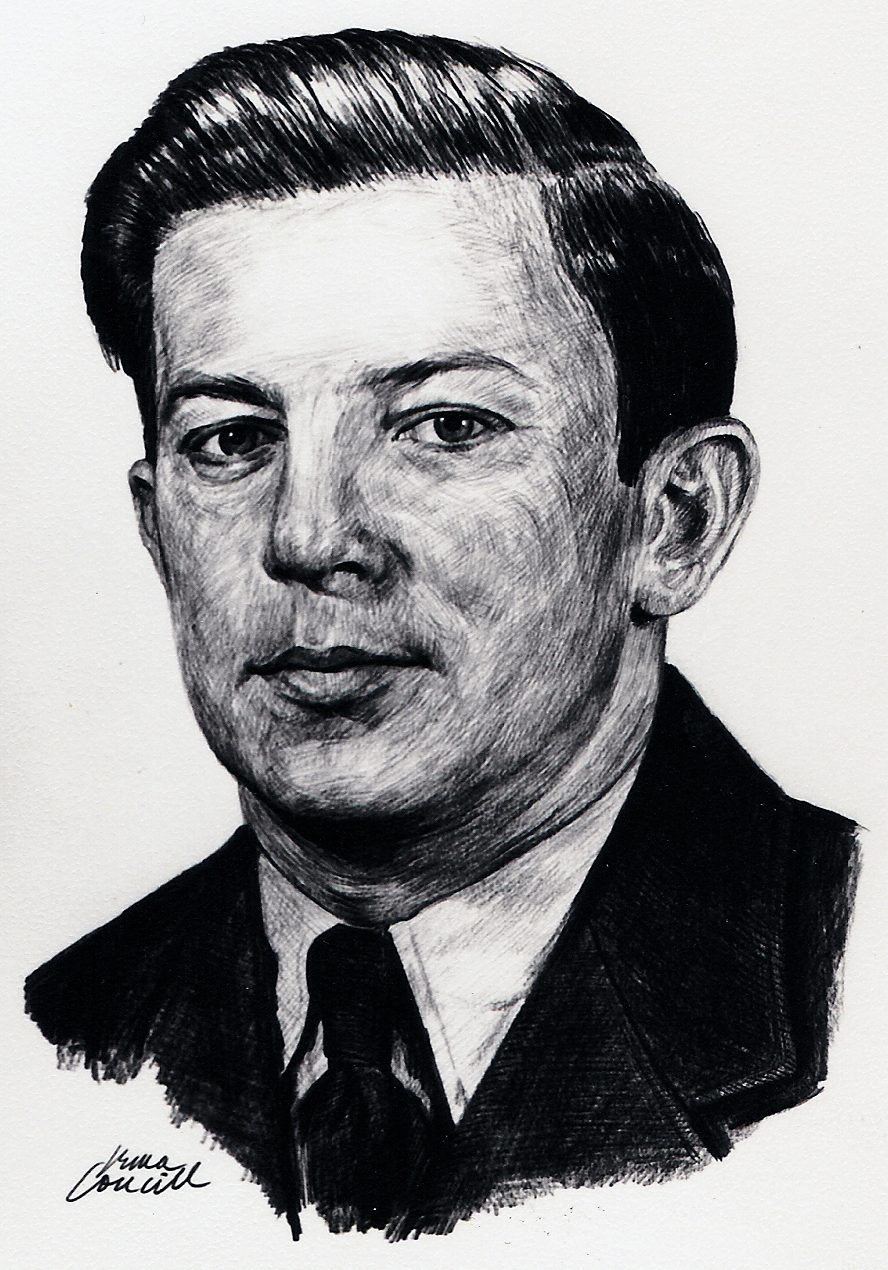Andrew Charles Mynarski

Nickname: Andy
Birth Date: October 14, 1916
Birth Place: Winnipeg, Manitoba
Death Date: June 12, 1944
Year Inducted: 1974
Awards: VC
His winning of the Victoria Cross in aerial combat must be regarded as one of the most outstanding contributions possible to the military aspect of Canadian aviation
Originally a Leather Worker
Andrew Charles (Andy) Mynarski, VC, was born in Winnipeg, Manitoba, on October 14, 1916. He attended King Edward and Isaac Newton Schools, and St. John's Technical School. He was employed as a leather worker. He enlisted in the Winnipeg Rifles in 1940 and transferred to the Royal Canadian Air Force (RCAF) the following year. In 1942 he graduated from training as an air gunner and was sent to active duty in England.
The RCAF
On completion of operational training he was posted to No. 9 Squadron, Royal Air Force (RAF), and in 1944 joined No. 419 Squadron, RCAF, where he completed 12 operational flights and was promoted to Pilot Officer on June 11. The following night Mynarski took his position as mid-upper gunner of an Avro Lancaster bomber. The aircraft never returned to base.
A Story to Remember
When the war ended and the prisoners of war were liberated, some outstanding acts of bravery previously unknown were revealed. Among them was one which brought a posthumous Victoria Cross to Pilot Officer Andrew Charles Mynarski. The six survivors of Mynarski's crew who were liberated from German prisoner-of-war camps told the story of the events of that night.
The citation accompanying the honour tells the complete story:
"Pilot Officer Mynarski was mid-upper gunner of a Lancaster bomber, detailed to attack a target at Cambrai in France on the night of June 12, 1944. The aircraft was attacked from below and astern by an enemy fighter and ultimately came down in flames. As an immediate result of the attack, both port engines failed. Fire broke out between the mid-upper turret and the rear turret, as well as in the port wing. The flames soon became too fierce and the captain ordered the crew to abandon the aircraft. Pilot Officer Mynarski left his turret and went towards the escape hatch. He then saw that the rear gunner was still in the turret and apparently unable to leave it. The turret was, in fact, immovable, since the hydraulic gear had been put out of action when the port engines failed, and the manual gear had been broken by the gunner in his attempt to escape. Without hesitation Pilot Officer Mynarski made his way through the flames in an endeavour to reach the rear turret and release the gunner. Whilst doing so, his parachute and his clothing, up to his waist, were set afire. All his efforts to move the turret and free the gunner were in vain. Eventually the rear gunner clearly indicated to him that there was nothing more that he could do and that he should try and save his own life. Pilot Officer Mynarski reluctantly went back through the flames to the escape hatch. There, as a last gesture to the trapped gunner, he stood to attention in his flaming clothing and saluted, before he jumped out of the aircraft. Pilot Officer Mynarski's descent was seen by French people on the ground. Both his parachute and his clothes were on fire. He was found eventually by the French, but so severely burned that he died from his injuries. The rear gunner had a miraculous escape when the aircraft crashed. He subsequently testified that had Pilot Officer Mynarski not attempted to save his comrade's life, he could have left the aircraft in safety and would, doubtless, have escaped death. Pilot Officer Mynarski must have been fully aware that in trying to free the rear gunner he was almost certain to lose his life. Despite this, with outstanding courage and complete disregard for his own safety, he went to the rescue. Willingly accepting the danger, Pilot Officer Mynarski lost his life by a most conspicuous act of heroism which called for valour of the highest order."
P/O Andrew Mynarski was honoured in 1984 when the Canadian Warplane Heritage Museum restored a Lancaster Mk.X to full flying condition. It was dedicated to his memory at a ceremony held in Hamilton Civic Airport, Mount Hope, Ontario. The surviving crew members of the fateful June 12, 1944 mission were present for the dedication ceremony. He was further honoured in 2007 by having a large bronze statue dedicated to his memory at the Middleton St. George bomber base where he served in England.
The Victoria Cross which was awarded to Pilot Officer Andrew Mynarski in 1946 was the last award of its kind presented after the Second World War to a Canadian airman.
Andrew Charles (Andy) Mynarski was inducted as a Member of Canada's Aviation Hall of Fame in 1974 at a ceremony held at Edmonton, Alberta.
To return to the Inductee Page, please click here.
